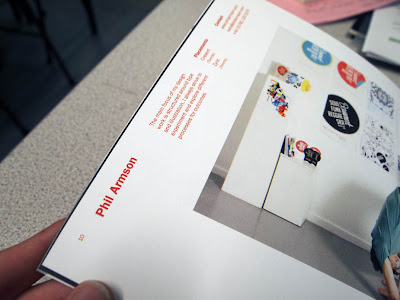OK, so the year book briefing was postponed so we've just had a quick meeting today to discuss where we're at, and what we need in order to produce pitch boards for hand in on Friday. Essentially we're working with the theme of legacy, something Ross came up with, which I happen to like, my idea was based around the idea of the first full cycle of 3 years and I guess the legacy we leave for future people on the course. We've kind of set a benchmark to either be met or raised by future years. The ideas fit nicely, and surmising it in one word like Ross did is beneficial.
To that end, I had a few quick ideas about what legacy is. Legacy isn't us as people, but the work we leave behind, to that end, the personality of ourselves should be stripped away and the work should speak for it's self. My quick ideas I came up with revolve around the photos, firstly, the photos of the students should be plain, against a plain background; white top, white background etc. with a quote about their personal legacy positioned inside the photograph.
The work photograph would then be as much work intricately laid out as possible. In this sense, the person is stripped away, all that is left is the work.

Another thing, relating to the font choices; We're thinking of using a serif face, because that is the legacy of early type making tradition. It sort of makes sense to tie that together.
With the idea of legacy, Ross started looking at how the 3 could be manipulated into an infinity symbol. A legacy is infinite. He looked at manipulating the position of the 3, so when laid out in multiple piles it's possible to create the infinity symbol. There's definitely room to exploit this idea, so Ross's task for wednesday is to create as many quality cover designs as possible that we can work with.

After the discussion of ideas, we quickly action planned what we need to get done for a regroup on Wednesday morning. Firstly, we need to get things set up to mock up a student photograph. Kate had the idea of light projecting the quotes about legacy onto the composition, and then photographing those. I'm not opposed to the idea, so I think it would be good to try it out, but she's going to brainstorm the ways in which that can work and create some reference drawings for us to use on Wednesday. Jonny is getting all the equipment booked out and looking at ways in which we can take the photos successfully, given that there are light projections, this could be complicated.
And Finally, I'm looking at the quotes themselves, experimenting with typography and alignment, in order to get the most out of our light projection experiment. I think I'm also going to look at the layouts themselves, to try and get all the components to work together.

Here is Ross's proposal for what should go on the boards. Firstly, there is the cover that works as the splash page, along with details of what the overall concept is. Secondly, there are some example spreads. Showcasing how the concept works through. Finally there is additional materials/branding and a digital solution. If legacy is the real deal, then internet solutions ar e along lasting legacy that everyone can visit, so this is a good idea to go with and one that we can work on with Kate's digital specialism.










































